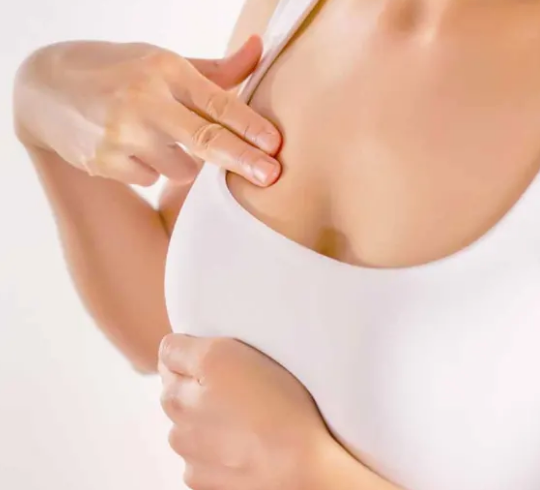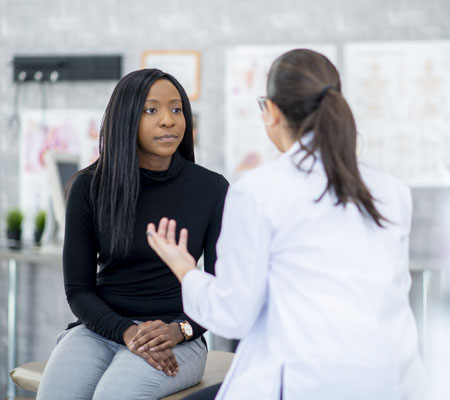What you need to know about Breast Biopsy Procedure
Contents
A breast biopsy is a procedure to remove a sample of breast tissue for laboratory testing. It is the best way to evaluate if a suspicious area or a lump in your breast is cancerous. The procedure is usually performed if your doctor finds something questionable during a mammogram, MRI, clinical breast exam, or ultrasound. Your doctor may also recommend you to undergo the procedure if you experience symptoms of breast cancer, such as a breast lump, breast dimpling, skin thickening on the breast, nipple changes, nipple discharge, a red rash on the breast, enlarging veins on the breast, and an enlarged lymph node in the armpit.
A breast biopsy can detect inflammatory breast cancer, cancer of the breast ducts (ductal carcinoma), cancer of the lobules (lobular carcinoma), and rare cancer affecting the nipples (Paget’s disease).
It is important to remember that needing a breast biopsy does not necessarily mean you have breast cancer. In fact, about 80% of women who have a breast biopsy do not have breast cancer. However, a breast biopsy is required because it is the only way to know for sure if the lump or suspicious area is cancerous or may lead to breast cancer.
Before a breast biopsy, your doctor may detect a suspicious area or lump in your breasts, or you may experience symptoms similar to breast cancer. After a breast biopsy, you will know if the lump or suspicious area is benign, precancerous, or cancerous. The result will help you and your doctor plans your treatment.

What does the Procedure Involve?
A breast biopsy can be performed in one of several different ways:
- Fine needle aspiration biopsy – fine needle aspiration biopsy (FNAB) is usually performed when a lump is felt during a clinical breast exam. This type of biopsy is often used when the lump is likely to be filled with fluid. It is especially helpful in distinguishing a solid mass from a fluid-filled cyst. During FNAB, a radiologist, surgeon, or pathologist uses a thin needle and a syringe to take a few samples of cells from a palpable lump (a lump that can be felt by hand). The needle is usually smaller than the type of needle used in a blood test, and patients may not need any anesthetic. However, since the needles are extremely thin, there is a possibility that it may miss nearby cancerous cells. Therefore, your doctor may recommend a different type of biopsy if the diagnosis is unclear.
- Core needle biopsy – this type of biopsy is usually done to evaluate a breast lump that is visible on a mammogram or an ultrasound. Your doctor may also use it if a breast lump is felt during a clinical breast exam. It uses a thin, hollow needle to remove tissue samples from the breast mass. The needle used is typically bigger than the ones used in fine-needle aspiration biopsy and may enter the suspect area for up to six times to remove several cores of tissues. Core needle biopsy is performed under local anesthetic and usually takes a lot longer than a fine needle aspiration biopsy. However, its chance to miss cancerous cells is lower, and the results are considered more reliable.
- Open (surgical) biopsy – also called a surgical or excisional biopsy, open biopsy involves the surgical removal of a breast mass. The surgeon creates an incision of around 1 to 2 inches in the breast to take all or part of the lump, as well as a small amount of normal tissue. If the lump cannot be found by touch, the surgeon may use X-rays to guide a thin needle to the mass prior to the surgery. A very thin wire is threaded with a hook at the end of the thin needle, and the hook is attached to the lump. The needle is then removed, and the wire stays in place to guide the surgeon to the suspect area. This type of biopsy can be carried out under local or general anesthesia.
In some cases, special tools may be needed in order to guide the needles to reach the targeted area. This type of biopsy may include:
- Vacuum-assisted biopsy – this type of biopsy involves creating a tiny incision to insert a hollow probe. Using X-Ray, ultrasound, or MRI, the hollow probe is then guided to the breast lump. Once the probe reaches the lump, the breast tissue is gently sucked into the probe using a vacuum. This type of biopsy enables your surgeon to collect several samples because the probe can be rotated.
- Stereotactic biopsy – a computer and mammogram are used during stereotactic biopsy to create a 3D image of the breast. The 3D image is used to guide the biopsy needle to the targeted area.
- Ultrasound-guided biopsy – during an ultrasound-guided biopsy, ultrasound images of the breast lump are used to help guide the needle to the targeted area. It is performed exactly the same as a core needle biopsy, but with the help of an ultrasound.
- MRI-guided biopsy – an MRI machine is used to help the surgeon guide the biopsy needle to the lump. A small incision is made in the targeted area and a sample is taken with a core needle.
The type of biopsy you will have is depended on several factors, including:
- Where the suspicious area or breast lump is located
- The size of the suspicious area or the breast lump
- If there is more than one suspicious area
- If you have other medical conditions
- Your personal preferences.
How Long Should I Stay at my Destination?
You should be able to leave the hospital on the same day as the breast biopsy procedure, as soon as the effects of anesthesia wear off. In some cases, you may need to stay in the hospital overnight, usually after a breast biopsy as it requires general anesthesia. Since it may take several days before the results are available, it is recommended that you stay in the local area for at least 7 days. Once the result is available, you will have to attend a follow-up visit. If you have a surgical biopsy, you will likely have stitches and your surgeon will remove them during the follow-up visit as well.
What’s the Recovery Time?
The recovery time depends on the type of breast biopsy you had and the type of anesthesia used. You generally should rest as much as possible for the remainder of the day and then resume your normal activities the day after. Still, you need to avoid strenuous activities for several days to avoid complications.
What About Aftercare?
For the first few days, you may need to wear dressings and a special bra over the breast biopsy site. Your doctor will give you instructions on showering, bathing, and caring for the wounds. It is important that you keep the biopsy area clean and dry. The biopsy area may be sore for a few days following the surgery. To ease the pain and discomfort, you can take a pain reliever that contains acetaminophen, such as Tylenol, but make sure to consult with your doctor before you take anything. In most cases, your doctor will prescribe you pain medication.
What’s the Success Rate?
A breast biopsy is a safe and effective procedure with about 95% success rate. The test result of a breast biopsy will determine if the lump or suspect area in your breast is benign (noncancerous), precancerous, or cancerous. Only 20% of breast biopsy results come back as cancerous.
If the breast lump is found to be cancerous, a breast biopsy can also detect the type of cancer. The information obtained from the biopsy can be used to help plan your treatment, which may include:
- A lumpectomy (a surgery to remove the tumor and preserve the breast)
- A mastectomy (a surgery to remove the entire breast)
- Chemotherapy
- Radiation therapy
- Hormone therapy.
If the test revealed that the breast lump is noncancerous, the test will also tell the conditions that cause the lump, such as adenofibroma, fibrocystic breast disease, mammary fat necrosis, and intraductal papilloma.
Although breast biopsy is a very safe procedure, there are some risks associated with the procedure, including:
- Swelling and bruising of the breast
- Mild pain at the biopsy site
- Infection or bleeding at the biopsy site
- Altered breast appearance
There may be other risks depending on your specific medical problems as well.
Are there Alternatives to Breast Biopsy Procedures?
A breast biopsy is the only definitive method to make a diagnosis of breast cancer. You may be able to undergo a breast exam, mammogram, breast ultrasound, or breast magnetic resonance imaging (MRI). However, if anything abnormal or suspicious is found during these tests, your doctor may still suggest you to undergo a breast biopsy to know for sure. If you do not want to undergo a breast biopsy, it is important that you talk to your doctor about the alternatives.
To check prices or to book a Breast Biopsy Procedure in Thailand or anywhere else in the world, head on over to MyMediTravel now!

